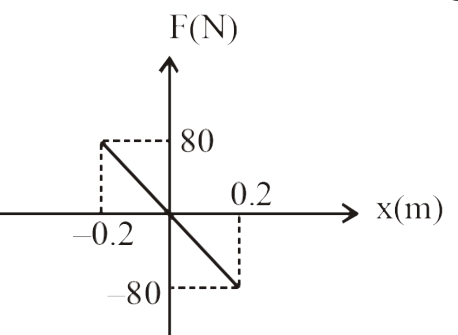A body executes simple harmonic motion under the action of a force F1 with a time period js. If the force is changed to F2, it executes SHM with time period 35s. If both the forces F1andF2 act simultaneously in the same direction on the body, its time period (in seconds) is
1225
75
2425
57
The correct Answer is:A
Step by step video, text & image solution for A body executes simple harmonic motion under the action of a force F_1 with a time period js. If the force is changed to F_(2), it executes SHM with time period (3)/(5)s. If both the forces F_(1) and F_(2) act simultaneously in the same direction on the body, its time period (in seconds) is by Physics experts to help you in doubts & scoring excellent marks in Class 12 exams.
Updated on:21/07/2023Topper's Solved these Questions
- OSCILLATIONS BOOK - DISHA PUBLICATIONCHAPTER - OSCILLATIONS EXERCISE - Exercise-1 : Concept Builder (TOPIC 3: Damped & Forced Oscillations and Resonance)
11 Videos
- NUCLEIBOOK - DISHA PUBLICATIONCHAPTER - NUCLEIEXERCISE - EXERCISE - 2 (CONCEPT APPLICATOR)
30 Videos
- PHYSICAL WORLD, UNITS AND MEASUREMENTSBOOK - DISHA PUBLICATIONCHAPTER - PHYSICAL WORLD, UNITS AND MEASUREMENTSEXERCISE - Exercise - 2 : Concept Applicator
30 Videos
Similar Questions
A particle is executing simple harmonic motion under the action of a force F with a time period 35s. When the force is changed to F', the time period of oscillation is 45s. When both the forces F and F' act simultaneously in the same direction on the body, time period in seconds in T=6a5b. COmpute the value of a + b.
View SolutionA body is executing simple harmonic motion under the action of a force F1 with time period 1 s. The time period is 2s when body is acted by another force F3. What will be the total time period when both the forces are acting in same direction simultaneously ?
View Solution
Knowledge Check
A body executes simple harmonic motion under the action of a force F1 with a time period 45s . If the force is changed to F2, it executes SHM with time period 35s. If both the forces F1andF2 act simultaneously in the same direction on the body, its time period (in seconds) is
A1225B2425C3524D2512Due to some force F1 a body oscillates with period 4/5s and due to other force F2 it oscillates with period 3/5s. If both the forces acts simultaneously in same direction then new period is
A0.72sB0.64sC0.48sD0.36sDue to some force F1 a body oscillates with period 4/5s and due to other force F2 it oscillates with period 3/5s. If both the forces acts simultaneously in same direction then new period is
A0.72 sB0.64 sC0.48 sD0.36 s
A body of mass 0.01 kg executes simple harmonic motion about x = 0 under the influence of a force as shown in figure. The time period of SHM is

View SolutionA body executes SHM under the influence of one force with a time period of 0.8second. It has a time period of 0.6 second udner the action of another force. Calculate the time period when both the force act in the same direction simultaneously.
View SolutionA body executes SHM under the influence of one force and has a period T1 seconds and the same body executes SHM with period T2 seconds when under the influence of another force. When both forces act simultaneously and in the same direction, then the time period of the same body (in seconds) is:
View SolutionA body of mass 0.01 kg executes simple harmonic motion (SHM) about x=0 under the influence of a force shown in the figure. The period of the SHM is

View SolutionA body has a time period T1 under the action of one force and T2 under the action of another force, the square of the time period when both the forces are acting in the same direction is
View Solution
